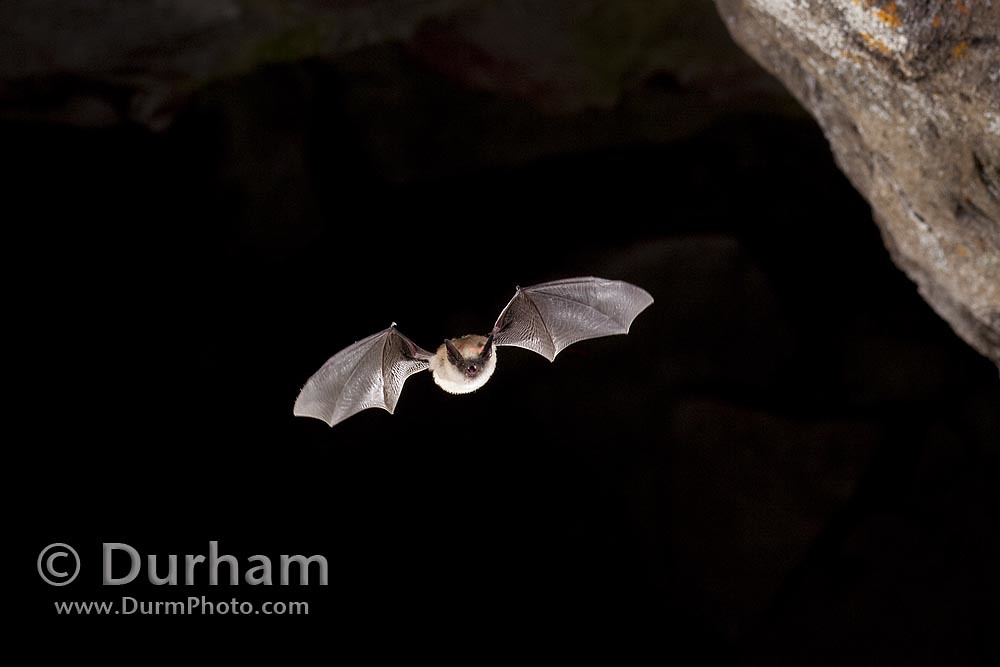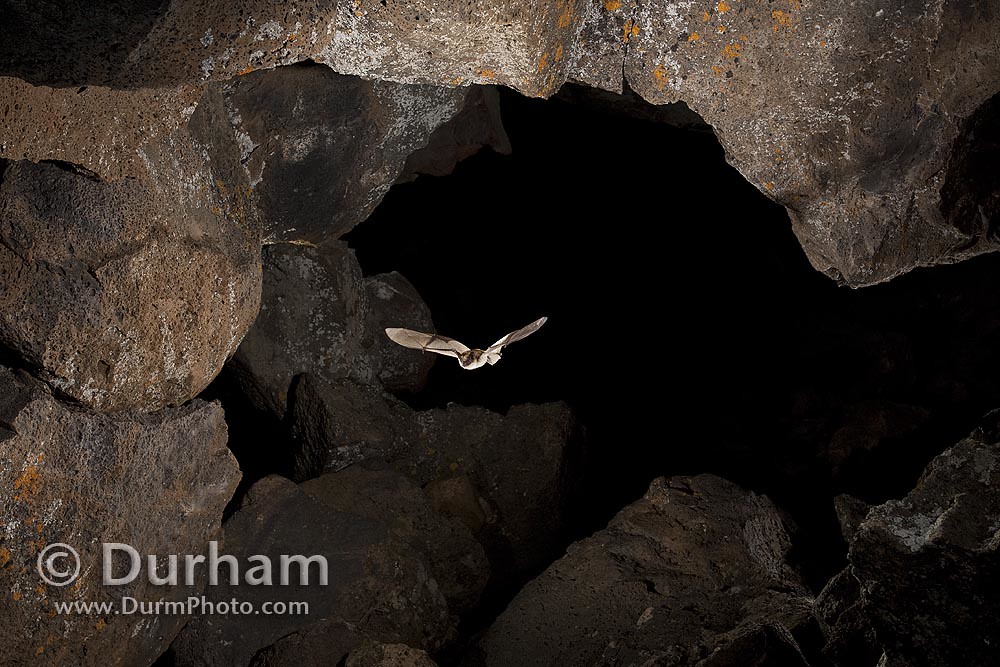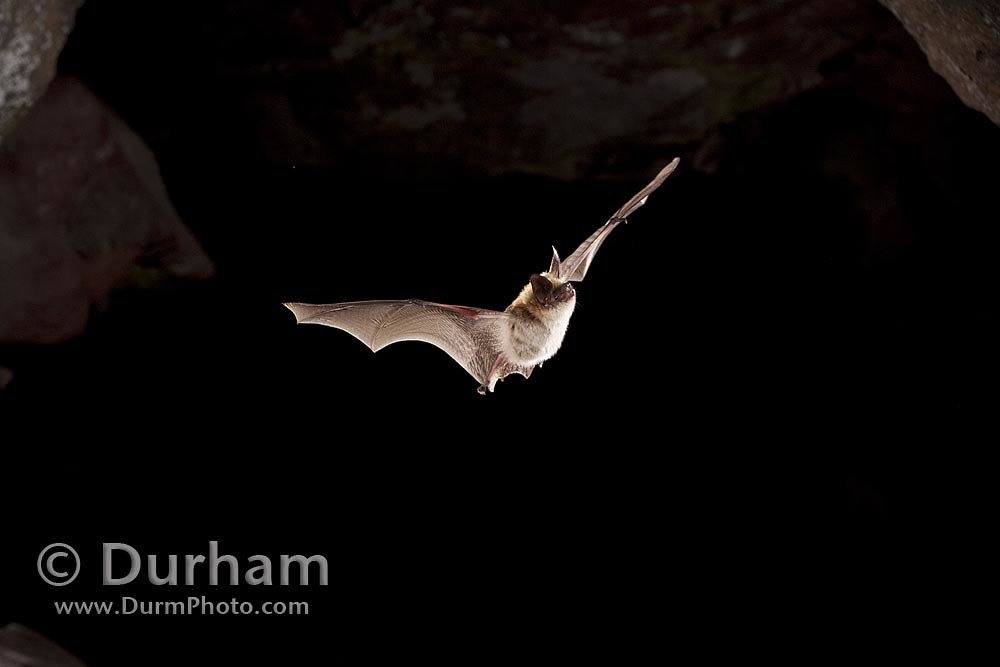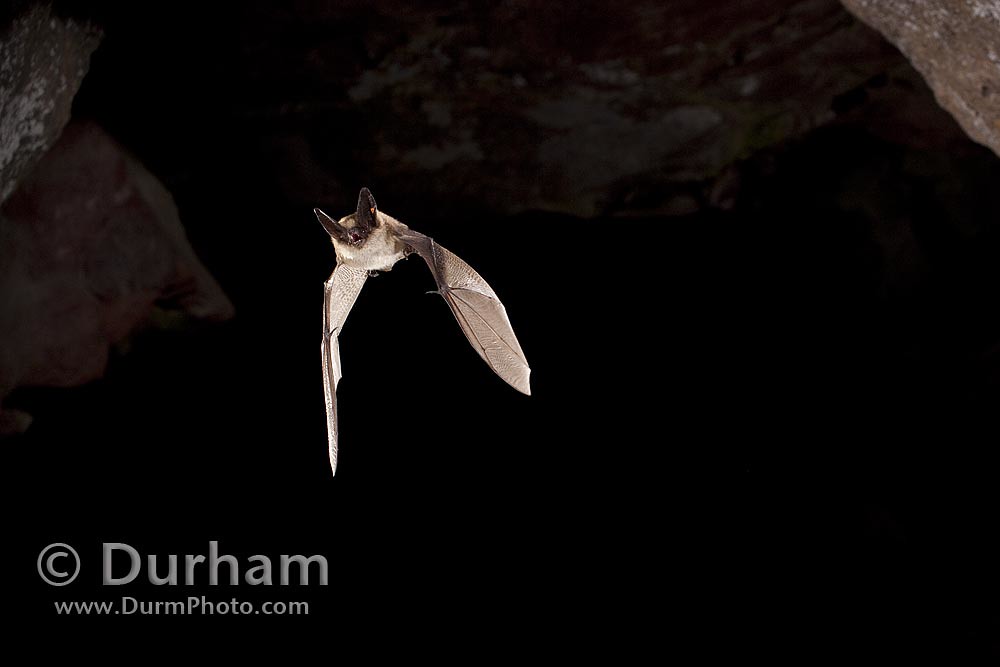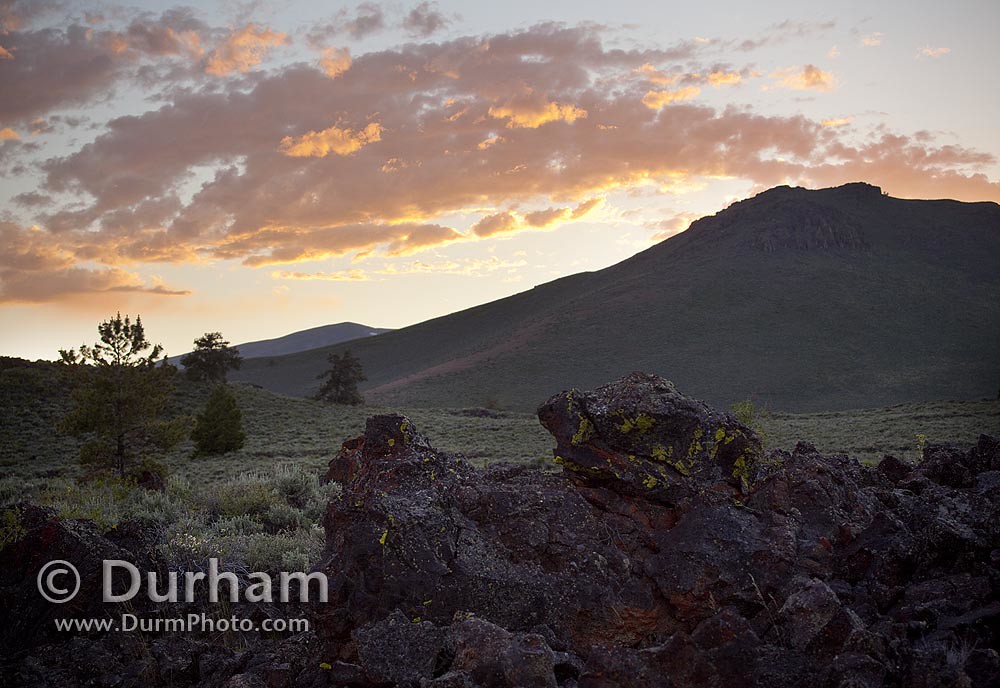More time lapse footage from the trusty Canon rebel. It was quite windy, which is why the camera is jostled around a bit.
high definition time lapse video in the desert of central washington
Saturday, July 31, 2010
Friday, July 30, 2010
Sunrise Time Lapse
I have been working in high-definition video for the past four years, but the remarkable Canon 5d Mk II and 7D have allowed me to shoot much more while in the field. Shoots that were strictly still photo, can now also be HD video without much additional equipment.
Of course, it has been possible to shoot video with a regular old still camera if one chooses to hook up an intervalometer and leave a camera in place for many hours if not days. The video below was shot with a standard issue Canon rebel purchased used off of Craigslist. I stuck it out in the middle of the high-desert in Washington and left it unattended for nearly two days while I was photographing bats.
Sometimes you get lucky with weather and atmosphere. Sometimes you don't.
object width="640" height="385">
Of course, it has been possible to shoot video with a regular old still camera if one chooses to hook up an intervalometer and leave a camera in place for many hours if not days. The video below was shot with a standard issue Canon rebel purchased used off of Craigslist. I stuck it out in the middle of the high-desert in Washington and left it unattended for nearly two days while I was photographing bats.
Sometimes you get lucky with weather and atmosphere. Sometimes you don't.
object width="640" height="385">
Labels:
high-desert,
Sunrise; desert sunrise;,
time lapse,
video
Thursday, July 29, 2010
Bat Chase - Hot Pursuit
The high-speed camera is cool because it can record things beyond what the human eye can perceive. I remain convinced that there are some wonderful and amazing things that happen at every moment, but proceed unnoticed because of perception, or lack there of.
Behold two long-legged bats in hot pursuit of one another. This is not the best image, but it records something remarkable. Note how they are contorting their bodies as they proceed at full speed with what appears to be chase and evasion.
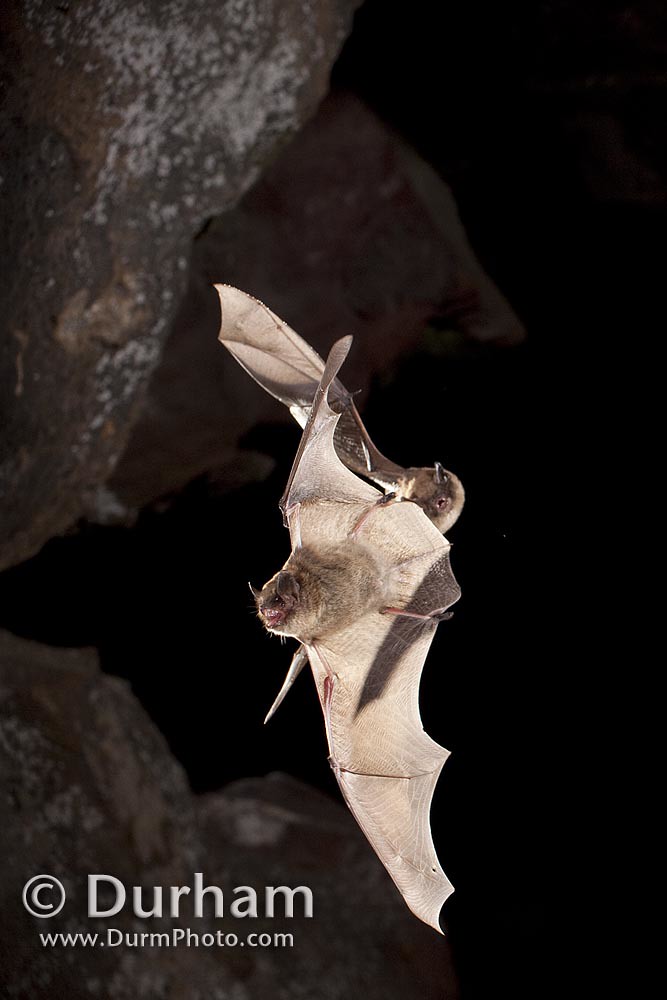
Two long-legged bats (Myotis volans) exit Pond Cave, one in hot pursuit of the other
Behold two long-legged bats in hot pursuit of one another. This is not the best image, but it records something remarkable. Note how they are contorting their bodies as they proceed at full speed with what appears to be chase and evasion.

Two long-legged bats (Myotis volans) exit Pond Cave, one in hot pursuit of the other
Wednesday, July 28, 2010
Townsend's big-eared bat (Corynorhinus townsendii)
One of the most beautiful and sensitive species of bats using this cave is the townsend's big-eared bat. I got this shot just moments before I shut the system down. In fact, I was dissapointed that I had not photographed any of the Townsend's that I knew were using the cave. Like magic, this was the final frame.

A townsend's big-eared bat (Corynorhinus townsendii) exiting pond cave

A townsend's big-eared bat (Corynorhinus townsendii) exiting pond cave
Tuesday, July 27, 2010
Western Small-footed Myotis (Myotis ciliolabrum)
Monday, July 26, 2010
Long-Legged Bat (Myotis volans)
Long-legged myotis, another bat recorded at Craters of the Moon National Monument.
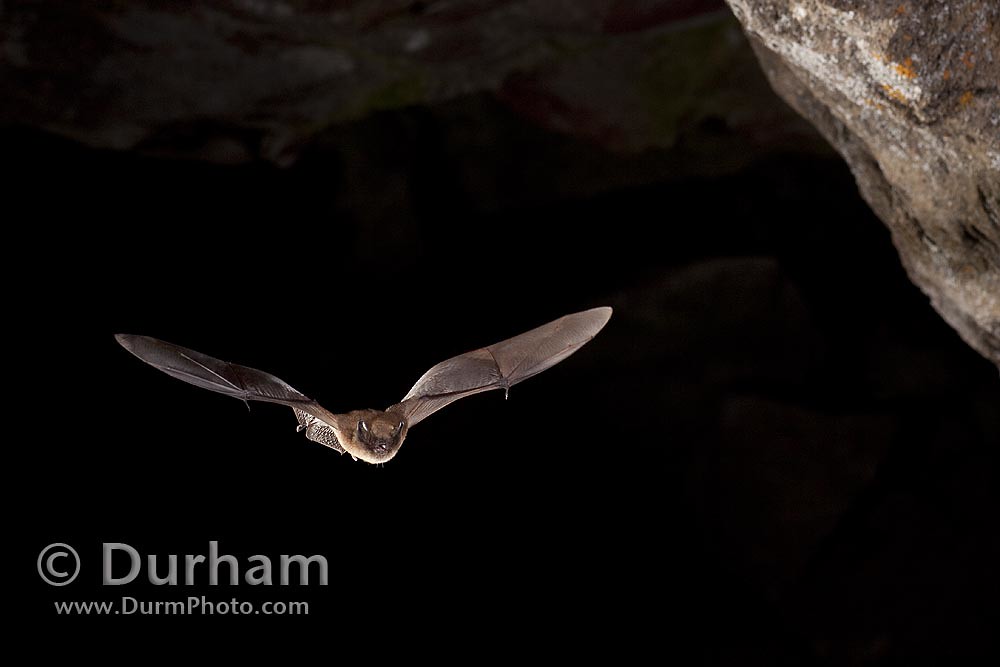
long-legged bat (myotis volans)
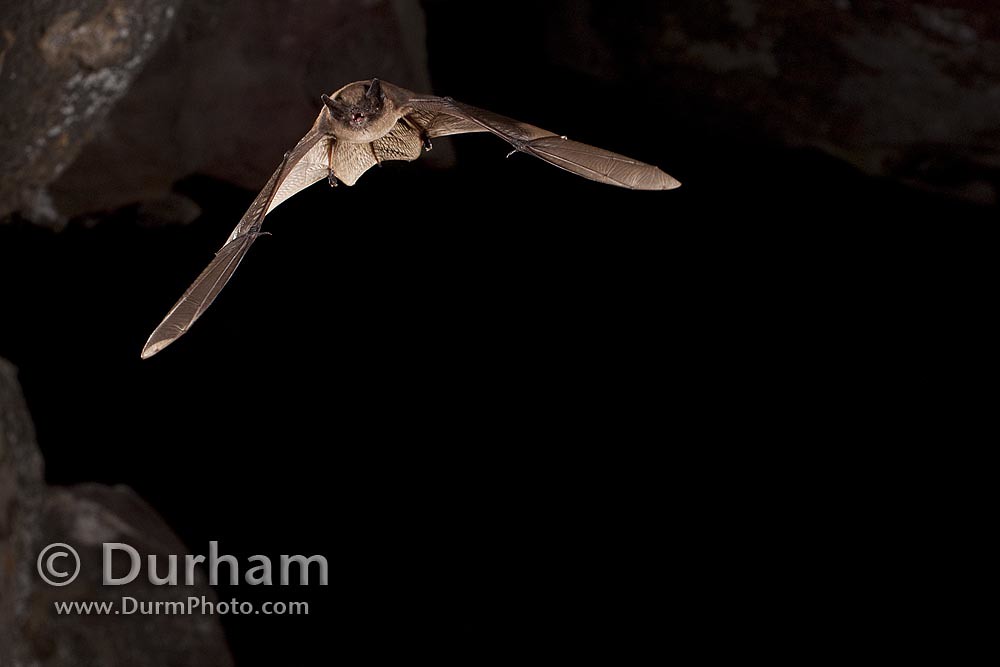
long-legged bat (myotis volans)
In the photo below, and long legged bat follows a western long-eared bat.
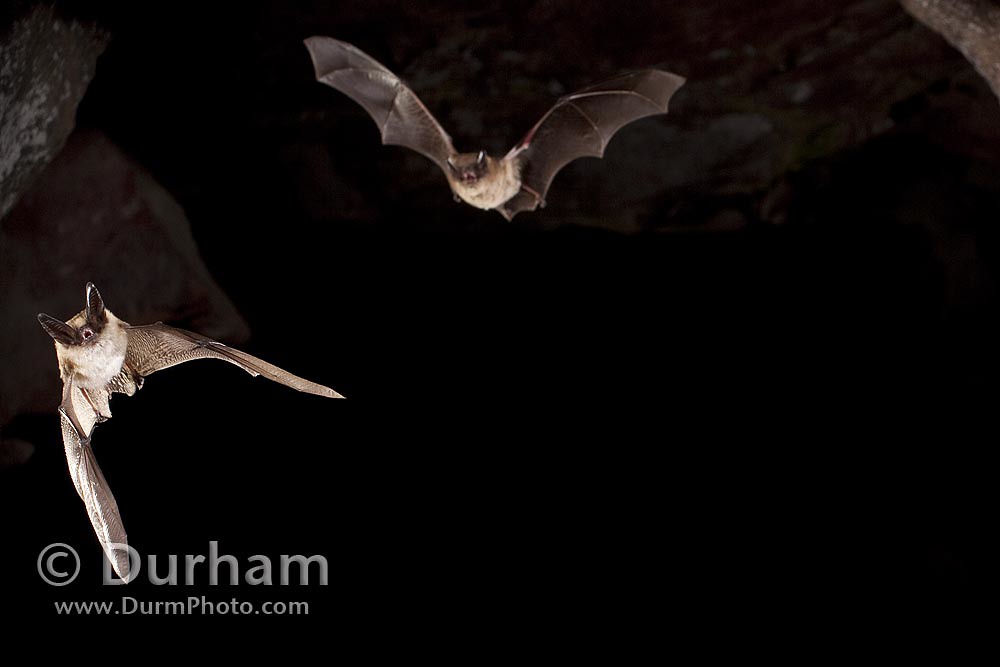
a western long-eared bat (myotis evotis) followed by a long-legged bat (myotis volans)

long-legged bat (myotis volans)

long-legged bat (myotis volans)
In the photo below, and long legged bat follows a western long-eared bat.

a western long-eared bat (myotis evotis) followed by a long-legged bat (myotis volans)
Sunday, July 25, 2010
Western Long-eared Myotis (Myotis evotis)
Saturday, July 24, 2010
A New Discovery - Craters Of The Moon National Monument
I was recently working with the National Park Service to photograph and film a recently discovered cave in Craters of the Moon National Monument. This volcanic landscape is littered with caves and lava tubes. Most of these have been known about for decades, and most had been mapped in the 1950's.
When a new cave was recently found by a researcher tracking rattle snakes, it was a little bit of a surprise.
The cave is too cold for bats to live in, but they love to visit it just after night fall. I set up the high-speed camera to record what species were actively using the cave...
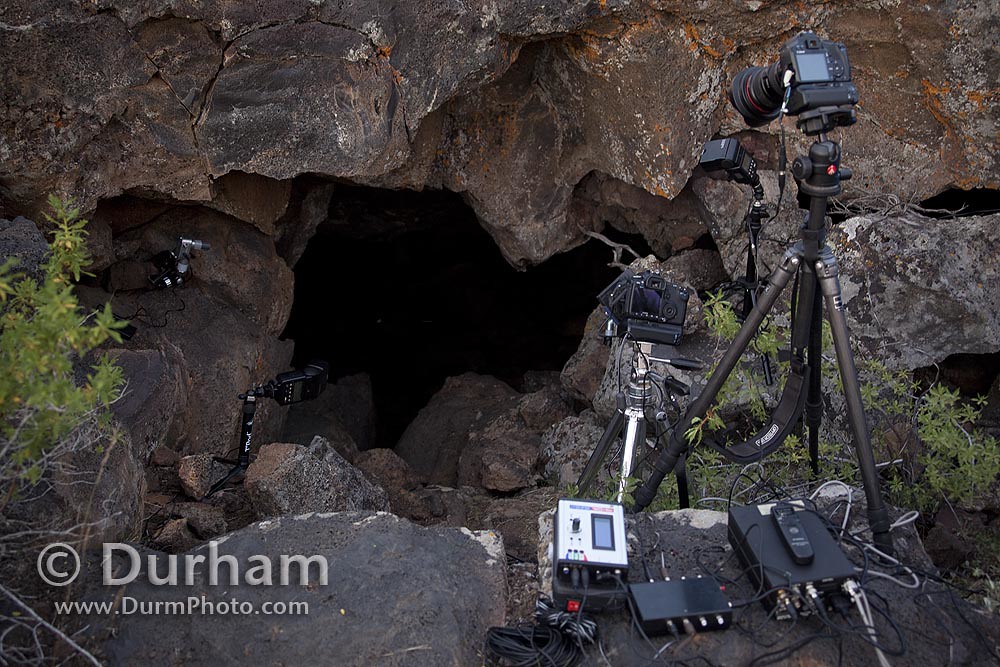
high-speed camera set-up ready for action
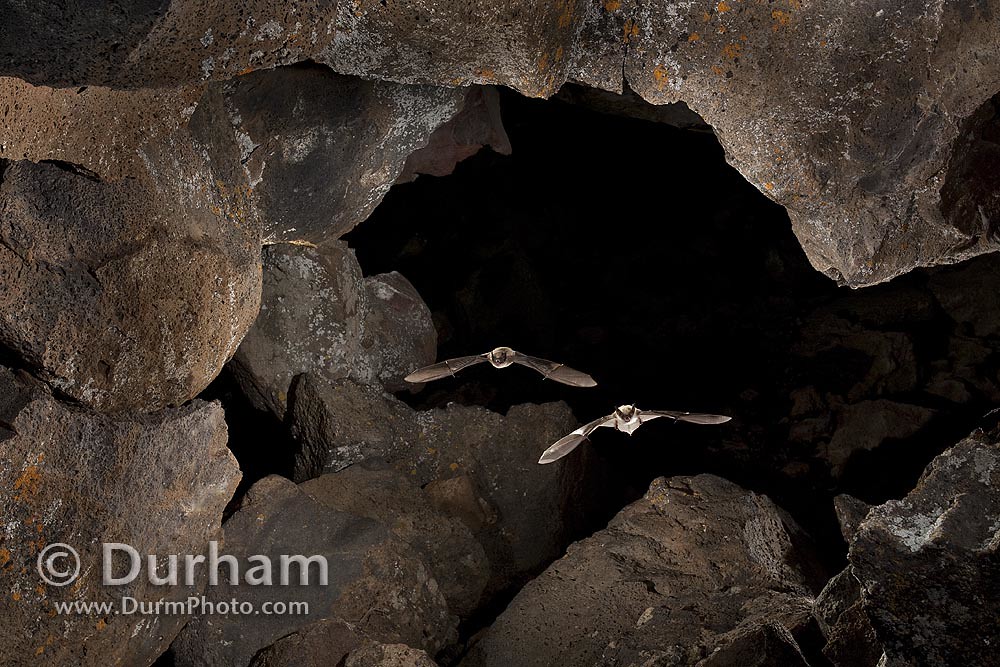
bats flying out of cave
When a new cave was recently found by a researcher tracking rattle snakes, it was a little bit of a surprise.
The cave is too cold for bats to live in, but they love to visit it just after night fall. I set up the high-speed camera to record what species were actively using the cave...

high-speed camera set-up ready for action

bats flying out of cave
Friday, July 23, 2010
Cinder Garden
In the heat of the day, the surface temperature at Craters of the Moon National Monument can reach 140 degrees fahrenheit, especially in areas with dark volcanic rocks. During my recent visit, the early summer wildflowers were putting on quite a show. It takes an especially hardy plant to survive the drying winds, extreme heat, and barren soil. Not how the plants evenly space themselves throughout the cinder.
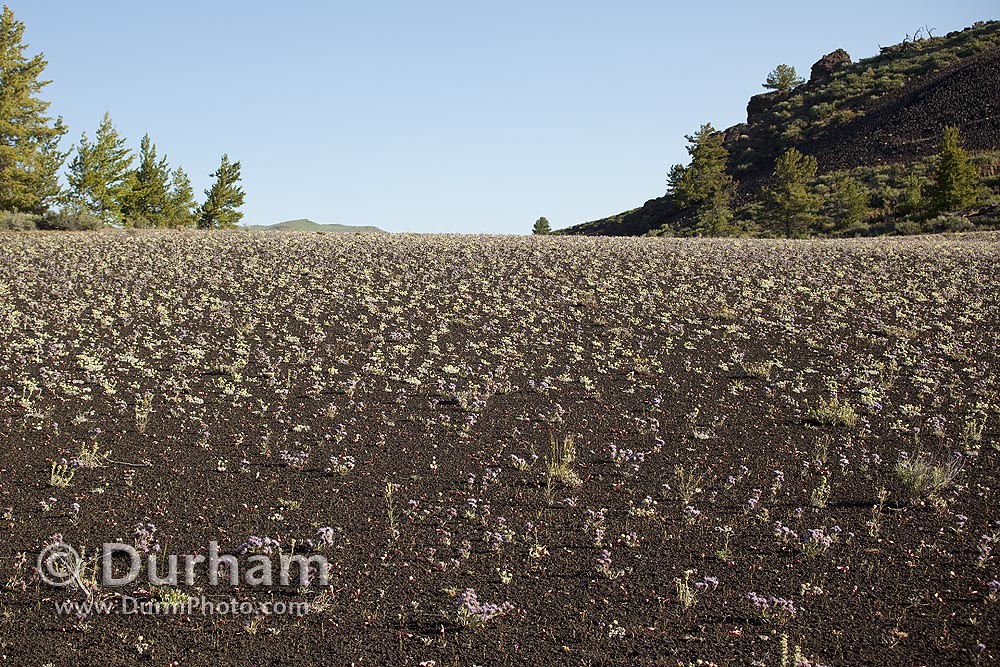
cinder garden in craters of the moon national monument
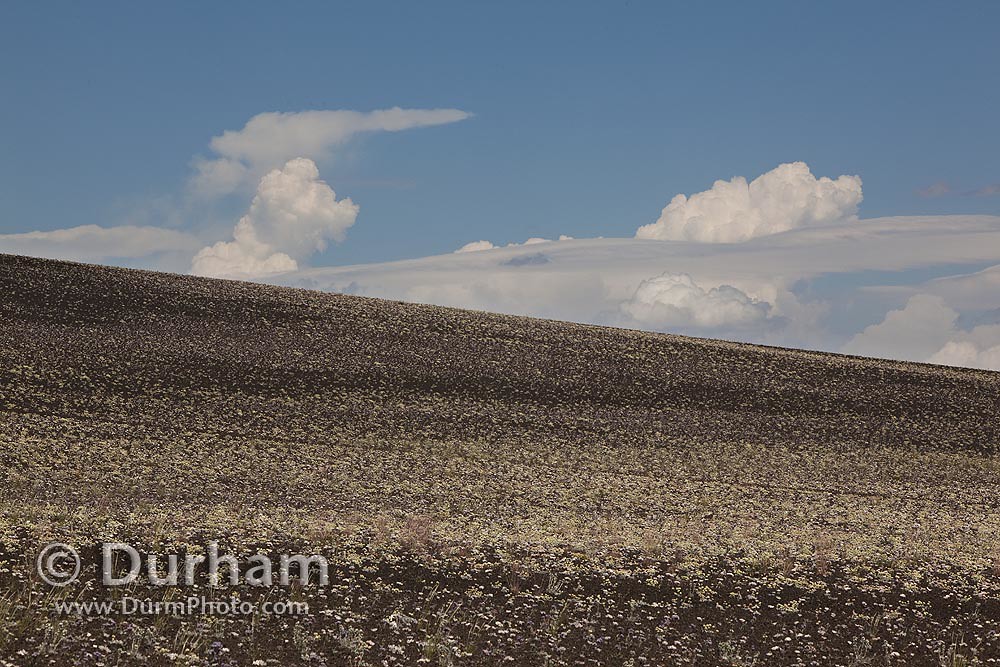
cinder garden in craters of the moon national monument
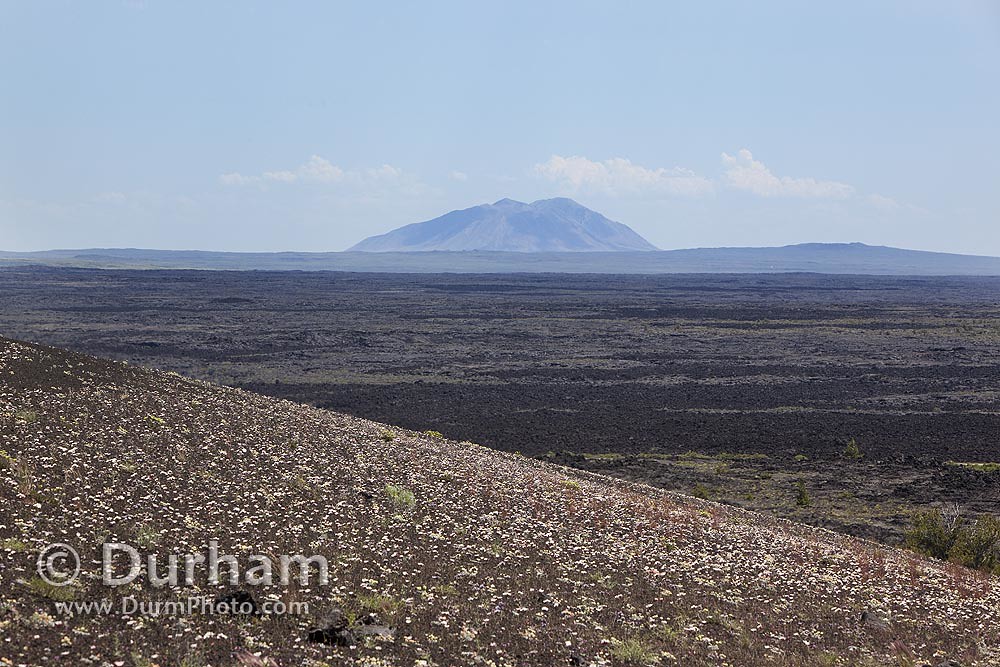
big southern butte, a volcanic cone, with cinder garden in foreground

cinder garden in craters of the moon national monument

cinder garden in craters of the moon national monument

big southern butte, a volcanic cone, with cinder garden in foreground
Thursday, July 22, 2010
American pika (Ochotona princeps) Video
If you thought the photographs were cute, check out this video that I shot in Craters of the Moon National Monument. You will notice the Pika calling. They do this frequently. Occasionally you can hear an alarm call as in "predator in the area". But mostly they seem to be calling back and forth amongst each other, as a way of avoiding contact. They are very territorial, and it is much easier to avoid getting into a land skirmish if you don't accidentally bump into one another in the rocks. By calling they are saying "I'm here, where are you?" which implies "lets keep our distance".
american pika (ochotona princeps) in craters of the moon national monument
american pika (ochotona princeps) in craters of the moon national monument
Wednesday, July 21, 2010
American Pika (Ochotona princeps) in Craters of the Moon
Pika are typically found in high elevation rock screes in the Cascades and Rockies. Members of the rabbit family (believe it or not), they have adapted to a completely different life style than their rabbit cousins.
Pikas at Craters of the Moon National Monument in Idaho are different in size, color, and behavior than their mountain cousins. The elevation is lower than their typical habitat, but they thrive here. They are also much darker and smaller than mountain pika. During the warmest summer months, they are most active at dawn and at dusk rather than during the day as are their mountain relatives. Here they make their home in the lava fields using the broken lava for shelter.

american pika (ochotona princeps) calling
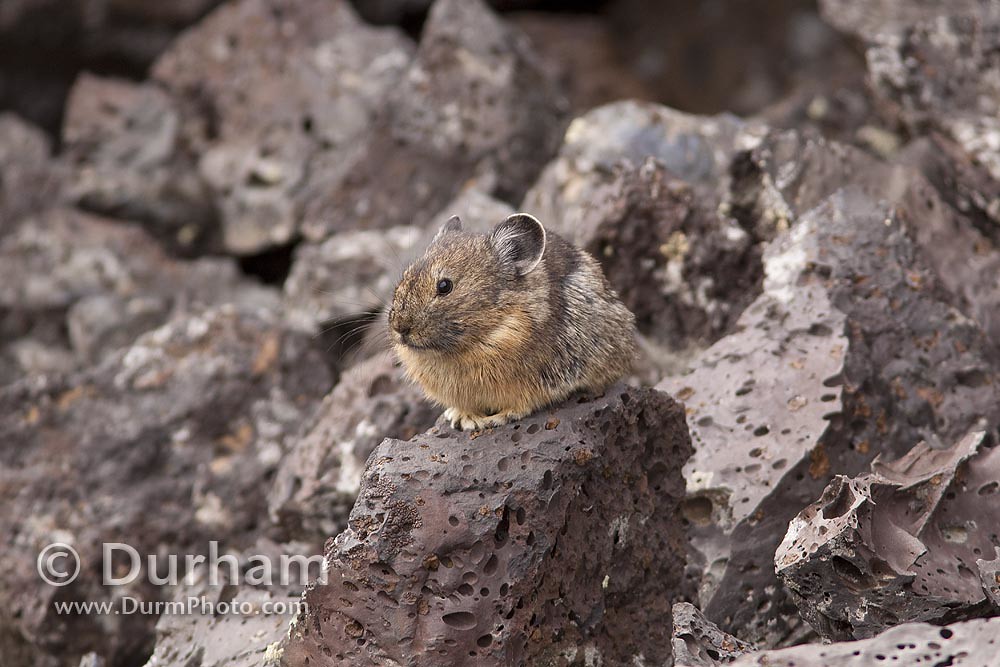
american pika (ochotona princeps)
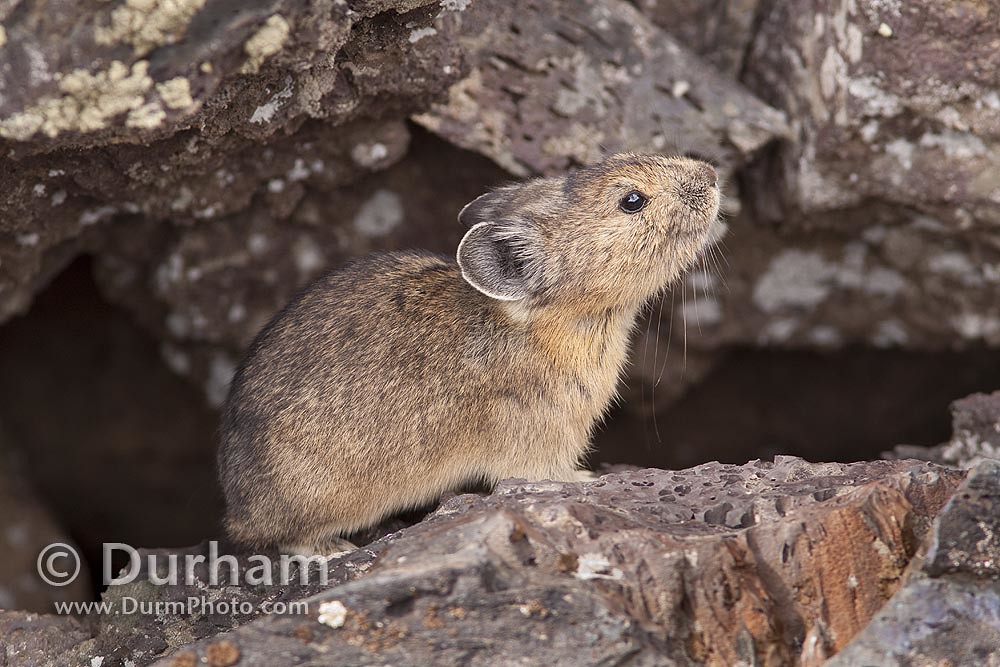
american pika (ochotona princeps)
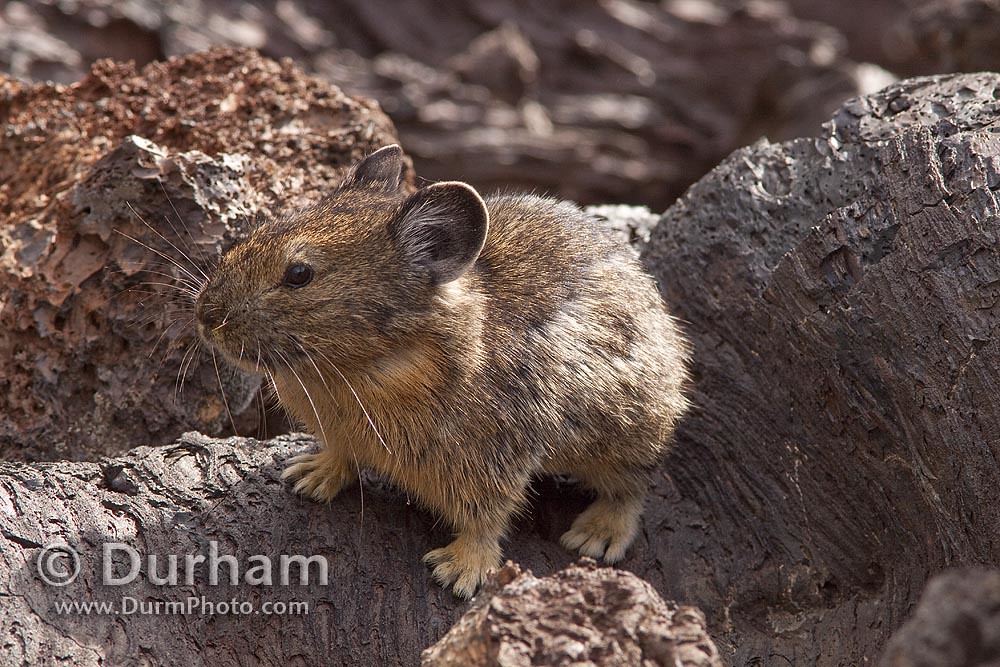
american pika (ochotona princeps) in lava flow
Pikas at Craters of the Moon National Monument in Idaho are different in size, color, and behavior than their mountain cousins. The elevation is lower than their typical habitat, but they thrive here. They are also much darker and smaller than mountain pika. During the warmest summer months, they are most active at dawn and at dusk rather than during the day as are their mountain relatives. Here they make their home in the lava fields using the broken lava for shelter.

american pika (ochotona princeps) calling

american pika (ochotona princeps)

american pika (ochotona princeps)

american pika (ochotona princeps) in lava flow
Tuesday, July 20, 2010
Harvesting Pacific Lamprey 2
While I was shooting at the lamprey harvest at Willamette Falls, I could barely stay upright because of the treacherous conditions. I was worried I would crack my head open, or worse, drop my gear in the water.
This video should give you some idea of what the conditions were like.
This video should give you some idea of what the conditions were like.
Monday, July 19, 2010
Harvesting Pacific Lamprey (Lampetra tridentata)
Lamprey will never win any beauty contests, but like any creature that is largely misunderstood - they have an interesting story. For starters these are an ancient lineage of fish. They have been around for 450 million years - before the age of the dinosaurs. They are the oldest existent family of vertebrates that still survive.
They have long been culturally important to the tribes, and are often served alongside salmon at tribal feasts and celebrations.
Collecting at Willamette Falls is not very easy. The rocks are slick as ice, and potential for injury is real. Yet tribal members scramble up cliffs, and reach into unseen crevices to find a lamprey.

umatilla tribe member kanim moses harvests pacific lamprey (lampetra tridentata) at willamette falls, in the willamette river near oregon city
They have long been culturally important to the tribes, and are often served alongside salmon at tribal feasts and celebrations.
Collecting at Willamette Falls is not very easy. The rocks are slick as ice, and potential for injury is real. Yet tribal members scramble up cliffs, and reach into unseen crevices to find a lamprey.

umatilla tribe member kanim moses harvests pacific lamprey (lampetra tridentata) at willamette falls, in the willamette river near oregon city
Sunday, July 18, 2010
Treaty Rights - Pacific Lamprey (Lampetra tridentata)
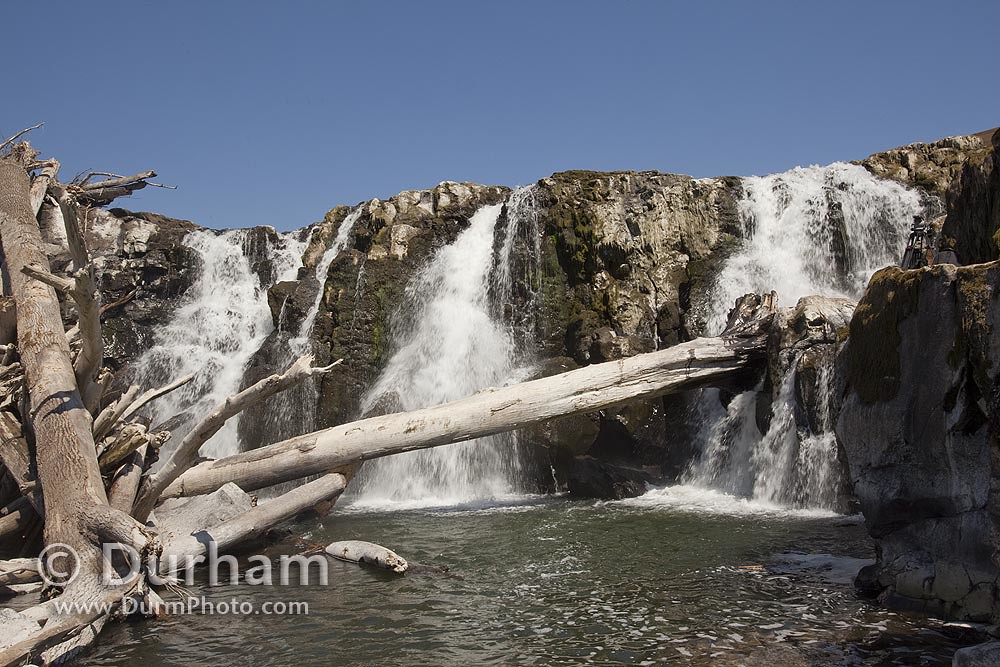
reduced flow of willamette falls on the willamette river
Willamette Falls on the Willamette River is usually a roaring tumult of water. A few days ago flash boards were installed to restrict the flow, and the falls became a shadow of their usual selves. Why? Tribes from the Columbia River Basin have treaty rights that allow them to harvest Pacific Lamprey from the falls. As I have mentioned previously, pacific lamprey are disappearing rapidly from the Columbia River Basin.
Lamprey are important to the tribes, and to the ecosystem of the river. However, for most of the past century lamprey have been classified as nuisance and trash fish. Yet lamprey have been part of the native american diet in the region for as long as anyone can remember. When they were plentiful, the high calorie fish was an important food for sustenance.
Now that they are disappearing, the tribes have been among the first to call attention to the significance of lamprey.
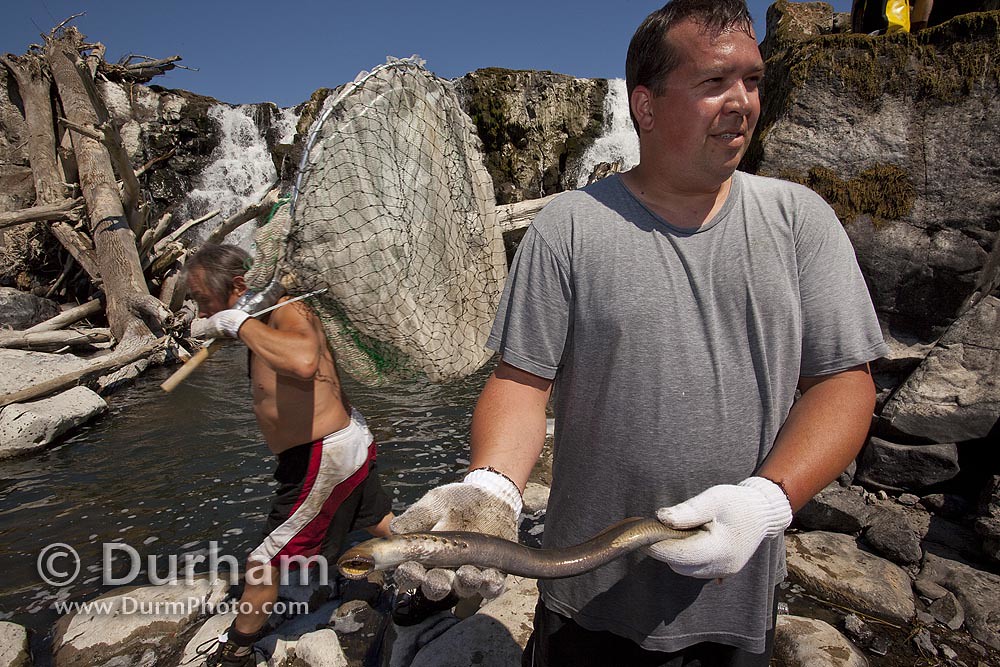
umatilla tribe member and fisheries biologist aaron jackson holds a pacific lamprey (lampetra tridentata) while umatilla tribe member tony montoya walks behind him with collecting nets.

pacific lamprey (Lampetra tridentata) collected from willamette falls
Saturday, July 17, 2010
Craters Of The Moon - Sunset
Friday, July 16, 2010
Double Rainbow
A video is making the rounds on the interwebs, and it can be alternately funny and sad to listen/watch. Mostly hilarious though.
It is hard to imagine getting so excited about a double rainbow, and I found myself in the presence of one just recently.
behold....
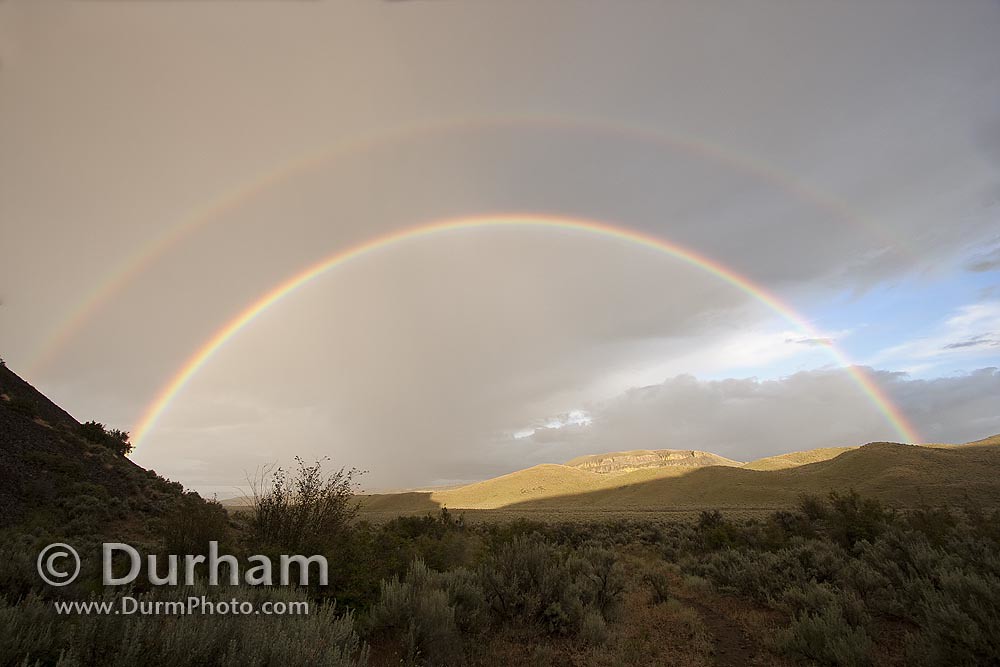
double rainbow photo
And the video from Youtube. I have no idea who this guy is, but he sure is into it.
It is hard to imagine getting so excited about a double rainbow, and I found myself in the presence of one just recently.
behold....

double rainbow photo
And the video from Youtube. I have no idea who this guy is, but he sure is into it.
Thursday, July 15, 2010
Say's Phoebe (Sayornis saya)
I love birds, but I haven's put much energy into bird photography. In some ways, they are too obvious a choice. There is something about the challenge of photographing subjects hidden from view, or obscured by size or speed, that I find more fulfilling.
However this little bird, presented herself directly in front of me and proceeded to put on a show of gleaning insects from the shrubs and grass. The behavior involved lots of hovering and quick maneuvers.
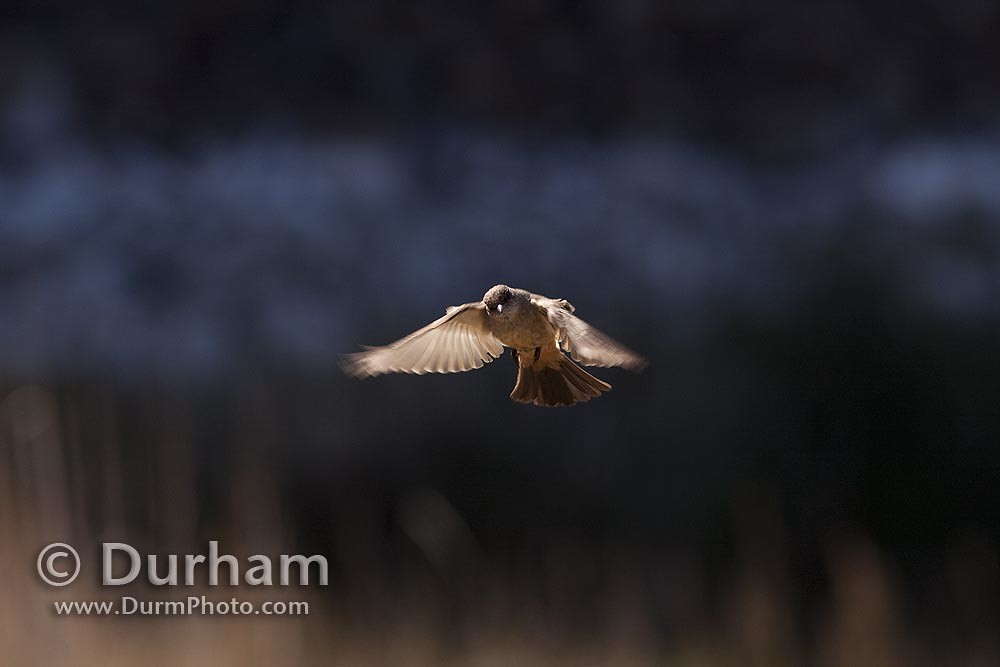
say's phoebe (sayornis saya) hovering above reeds looking to glean insects
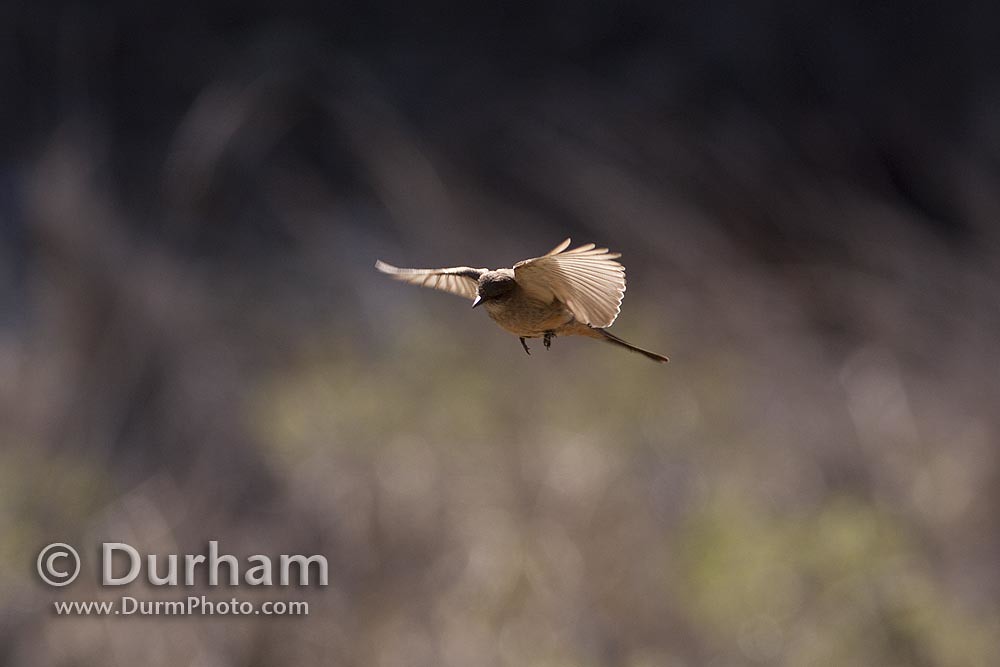
say's phoebe (sayornis saya)
However this little bird, presented herself directly in front of me and proceeded to put on a show of gleaning insects from the shrubs and grass. The behavior involved lots of hovering and quick maneuvers.

say's phoebe (sayornis saya) hovering above reeds looking to glean insects

say's phoebe (sayornis saya)
Wednesday, July 14, 2010
Soldier Fly (Hermetia illucens, Family Stratiomyiidae)
Look at the crazy eyes on this cool fly
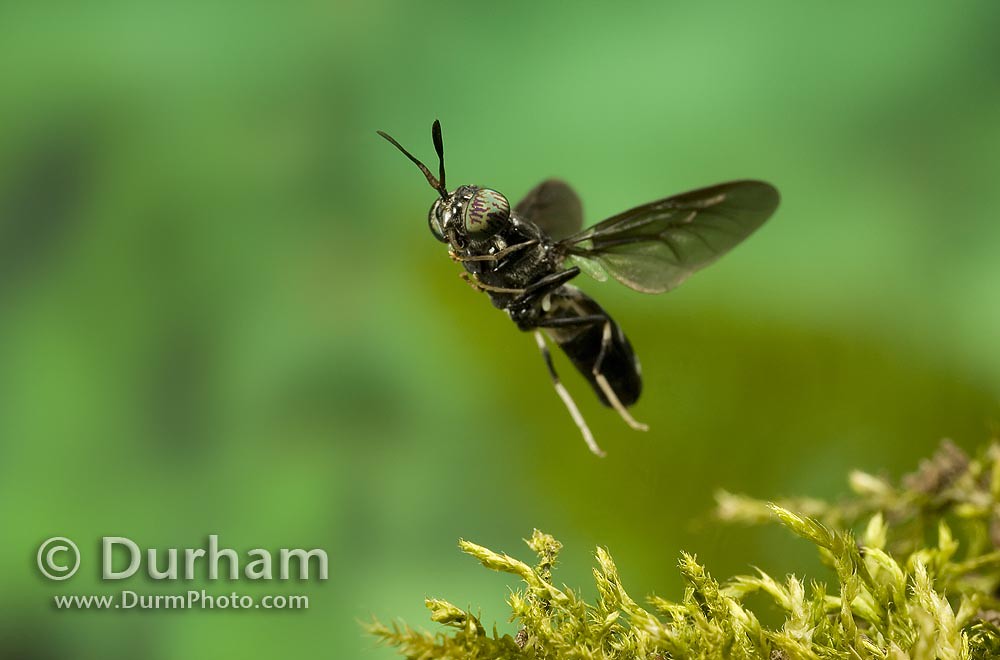
soldier fly (hermetia illucens, family stratiomyiidae) in flight over moss

soldier fly (hermetia illucens, family stratiomyiidae) in flight over moss
Tuesday, July 13, 2010
Barn Swallow Flying
Unlike yesterday's post, this did not rely on "blind luck", however I would be a fool not to acknowledge that luck does play a role. In fact, the failures and bad photos I have made far out number the good. Sometimes fate works in my favor.
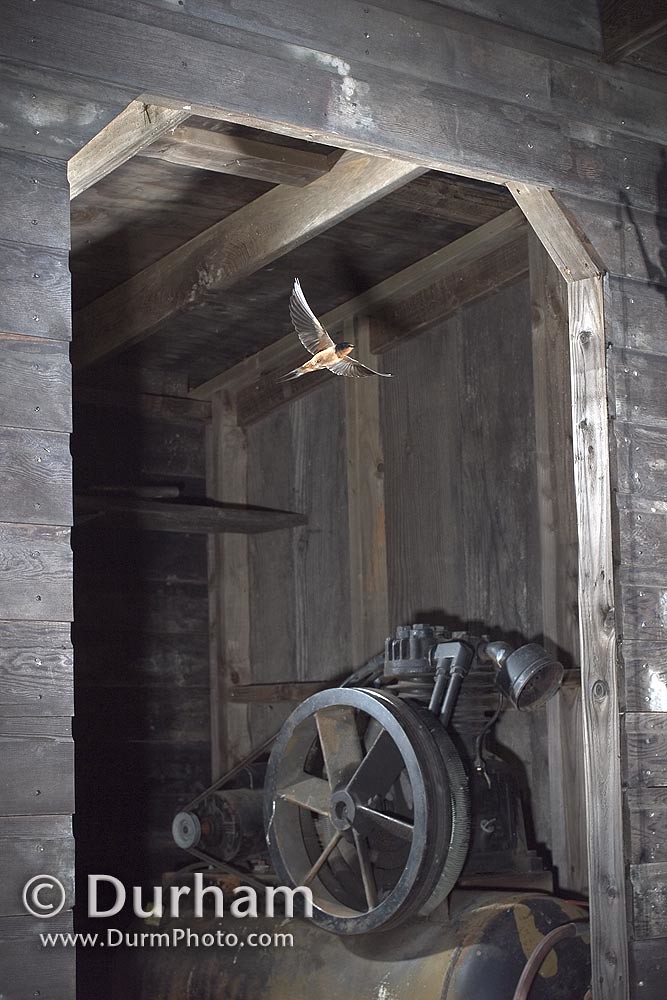
a barn swallow (Hirundo rustica) flies out of a compressor shed where it has a nest

a barn swallow (Hirundo rustica) flies out of a compressor shed where it has a nest
Monday, July 12, 2010
Bat At Dusk
Sunday, July 11, 2010
The Pack Rat And The Pringles Can
I wish I had a photo of this episode, but I was too out of it. I have been in the backcountry in Idaho, camping in the desert. I am still recovering from being ill, and operating at about 50% - 60% normal capacity. I was staying up late to photograph bats, and getting up early to photograph pika. It was impossible to sleep in the afternoon because of the heat.
So the few hours of sleep I was getting were precious.
I was awoken one night with an odd clunk clunk sound that seemed to be moving all around my tent. Did I leave a metal mug out? Is some animal playing with it?
With flashlight in hand, I groggily emerge from my tent and start looking for the source of the odd sound. The light beam quickly found a pack rat (a bushy tailed woodrat) dragging a pringles can through my camp. It was a short "snack version" of the can. That rat looked as if he has the prize to beat all prizes. I was camping in the middle of a lava bed, and the rat was jumping from rock to rock - banging the can with each jump.
I think it roused me to just show off the prize because the rat's path seemed erratically circular around my tent.
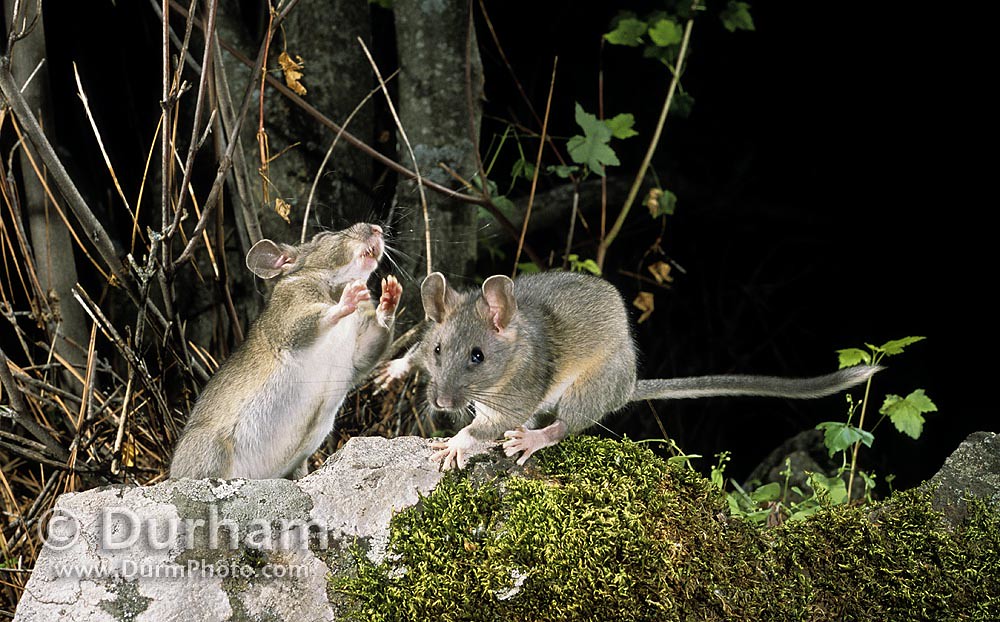
A pair of young bushy-tailed woodrats (Neotoma cinera)
The next day in town seeking provisions, I purchased a can of pringles.
So the few hours of sleep I was getting were precious.
I was awoken one night with an odd clunk clunk sound that seemed to be moving all around my tent. Did I leave a metal mug out? Is some animal playing with it?
With flashlight in hand, I groggily emerge from my tent and start looking for the source of the odd sound. The light beam quickly found a pack rat (a bushy tailed woodrat) dragging a pringles can through my camp. It was a short "snack version" of the can. That rat looked as if he has the prize to beat all prizes. I was camping in the middle of a lava bed, and the rat was jumping from rock to rock - banging the can with each jump.
I think it roused me to just show off the prize because the rat's path seemed erratically circular around my tent.

A pair of young bushy-tailed woodrats (Neotoma cinera)
The next day in town seeking provisions, I purchased a can of pringles.
Subscribe to:
Comments (Atom)
Blog Archive
-
▼
2010
(167)
-
▼
July
(21)
- Time Lapse 2
- Sunrise Time Lapse
- Bat Chase - Hot Pursuit
- Townsend's big-eared bat (Corynorhinus townsendii)
- Western Small-footed Myotis (Myotis ciliolabrum)
- Long-Legged Bat (Myotis volans)
- Western Long-eared Myotis (Myotis evotis)
- A New Discovery - Craters Of The Moon National Mon...
- Cinder Garden
- American pika (Ochotona princeps) Video
- American Pika (Ochotona princeps) in Craters of th...
- Harvesting Pacific Lamprey 2
- Harvesting Pacific Lamprey (Lampetra tridentata)
- Treaty Rights - Pacific Lamprey (Lampetra tridentata)
- Craters Of The Moon - Sunset
- Double Rainbow
- Say's Phoebe (Sayornis saya)
- Soldier Fly (Hermetia illucens, Family Stratiomyii...
- Barn Swallow Flying
- Bat At Dusk
- The Pack Rat And The Pringles Can
-
▼
July
(21)
Sites I read
Details About Me
- OregonWild
- Portland, Oregon, United States
- Husband, Father, Student Of Natural History, Photographer

